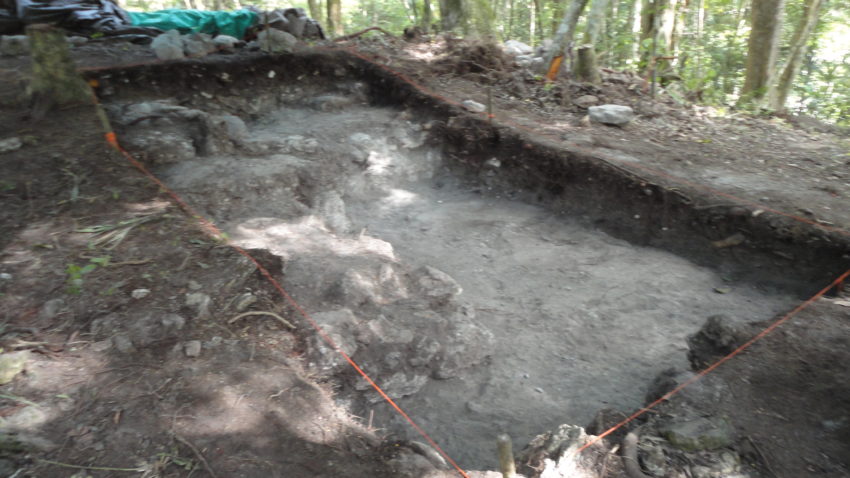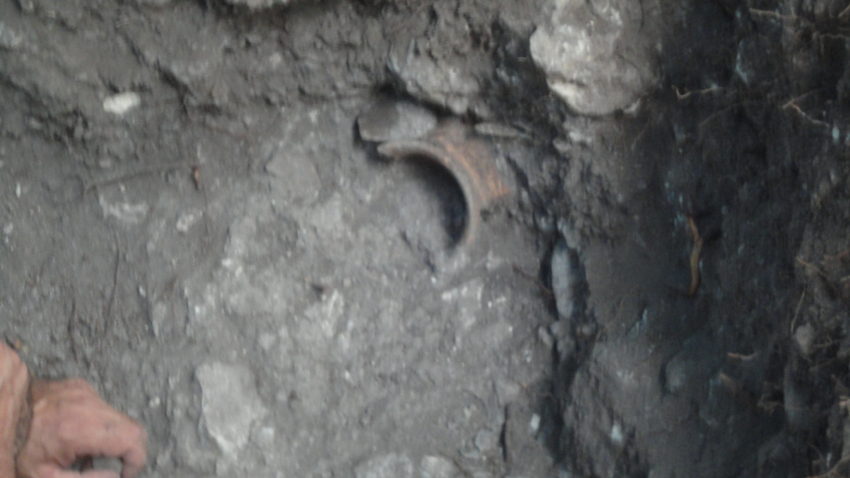I promised myself I would write in a daily journal, so every morning I was up at 5:00 am to have my first cup of coffee and write about the previous day. Breakfast was served at 6:00 am, a staff meeting was held at 6:30, and we were loaded in the trucks by 7:00ish. We were assigned a team and a structure to work on and usually arrived to the sound of howler monkeys or the antics of spider monkeys who liked to toss branches (or less desirable objects) at us from above. We took to our separate trails in the rain forest to our structures and would dig until break time at 10:00 am. We ate lunch at noon, we quit digging about 3:30 and were back at camp by 4:00 pm. Some of the group would load back in the trucks to swim at a local cenote (sink hole/natural deep well) or to shop at the local store. I chose to shower and don clean, dry clothes. Dinner was at 6:00 pm and sometimes there was a lecture at 7:00 as the sun was setting. The lectures were fascinating ranging from artist renditions of facial reconstructions from excavated burials to rock painting/art and Maya history. There was such a diverse group of professionals, doctoral candidates, graduate students, undergrads, businessmen and retirees. I so enjoyed listening to other archaeological experiences and stories, but I was exhausted by 8:30 or 9:00 pm and off to bed while others stayed up for more socializing.

Digging could be boring, hard on the back and strenuous. First we cut down trees, either with a machete or chain saw, raked the area clear and staked it 3 by 3 meters with string. We worked with two buckets, one for soil and one for rocks. We used small picks to loosen the humic and trowels and pans to scoop it up into the buckets. Root and rocks made for slow digging and we always had hand clippers nearby. In the beginning every fourth bucket was sifted through a screen. If there was a find such as obsidian, we switched to sifting every bucket. There were usually three people working a structure, two students or volunteers and one Maya who lived in the area. The Maya were extremely knowledgeable on structure construction and could interpret most of what we were finding. They were also wicked adept with a machete. My best find was a four to five-inch curved rim of a pot. It was important in dating that part of the structure to within 100 years or so. I found quite a few pottery sherds and some lithic (used for stone tools). Many of the other structures at our site were more forthcoming with the artifacts, especially in the pyramid and in the chultuns (underground storage chambers).

Great reading, Sue! I’m glad that you had such a fantastic adventure! Some day I’m going to follow in your footsteps.